When a platform becomes second nature, the real question isn’t just why we use it, but how it keeps us coming back.
For us, this is an excuse to explore the user experience (UX) of Spotify in greater detail. From the better-preferred mobile app to the desktop client, we'll review the features that have made Spotify a household name, as well as areas where the platform could level up a notch.
Three things we love about Spotify
Discover music tailored just for you
One of the standout features of Spotify is its smart algorithms that curate music tailored to individual listening habits. It's like having a personal music curator who knows your taste inside out. The “Discover Weekly” playlist, for instance, introduces users to new tracks and artists they might never have encountered otherwise. With every track you listen to, Spotify takes note and offers you something along similar lines. Although sometimes it gets a little carried away and behaves unusually, but when it’s finally taking a break from auto-playing Sabrina Carpenter’s Espresso as your next song, Spotify is at its level best.
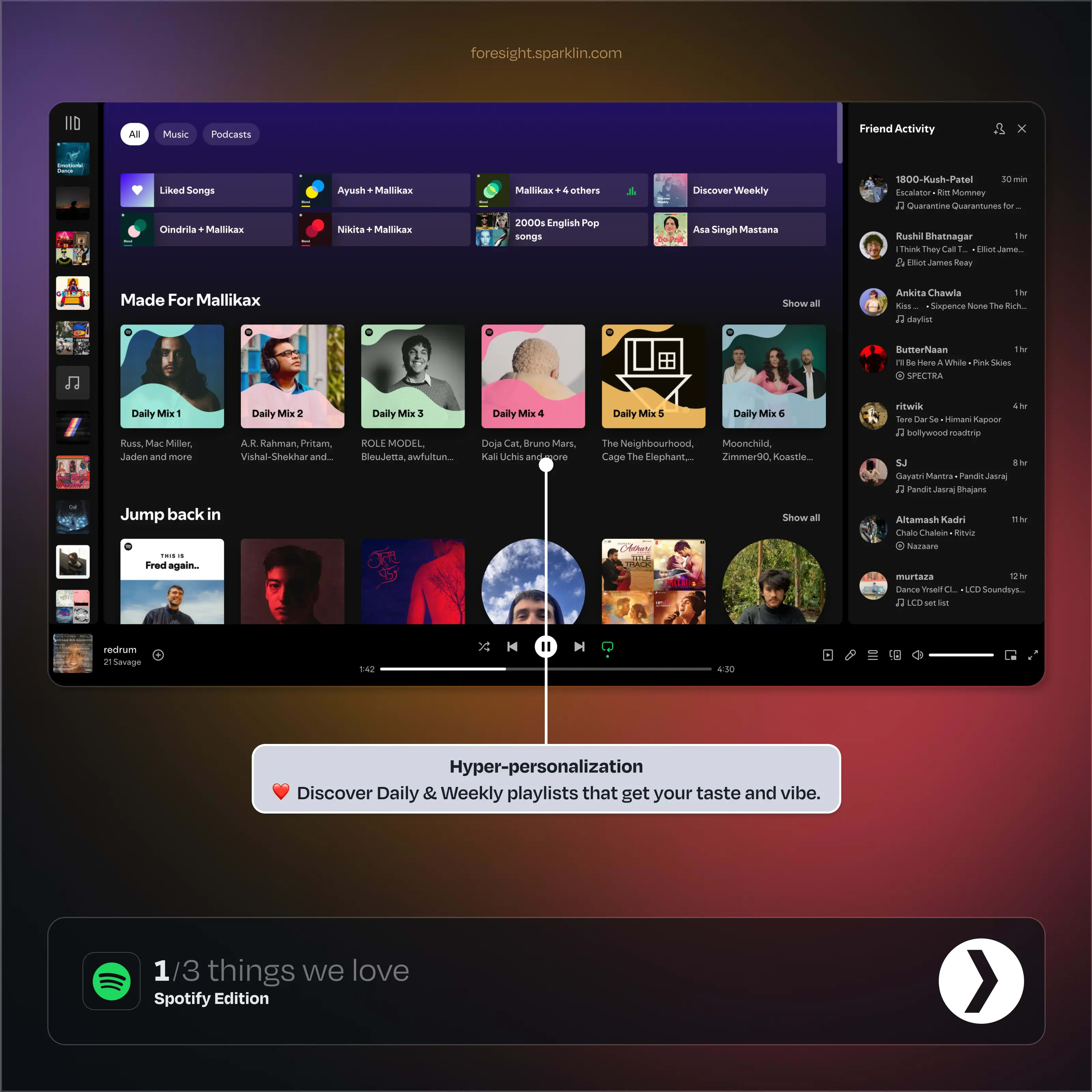
UX Psychology Laws Applied ✅
Law of Familiarity: Users prefer interfaces, designs, and experiences that feel familiar because they are easier to understand and navigate. Spotify leverages this principle by curating music based on a user’s listening habits.
2. Share & flex your music taste
Sharing music is an intrinsic part of the Spotify experience. With the ability to send songs to friends or start a listening party, you can flex your musical taste and introduce your friends to your acquired taste. What’s more, ever since reels took over Instagram and our feed, stories have become a substitute window for looking into our friends’ lives. Spotify looked into this and made their song profiles perfectly shareable and adaptable for an Instagram story format.
Another noteworthy feature of the Premium plan is Blends, where you can invite a friend to collaborate on a playlist. The algorithm combines both of your and your friend’s listening habits, creating a personalized mix in anticipation of your future jamming sessions.
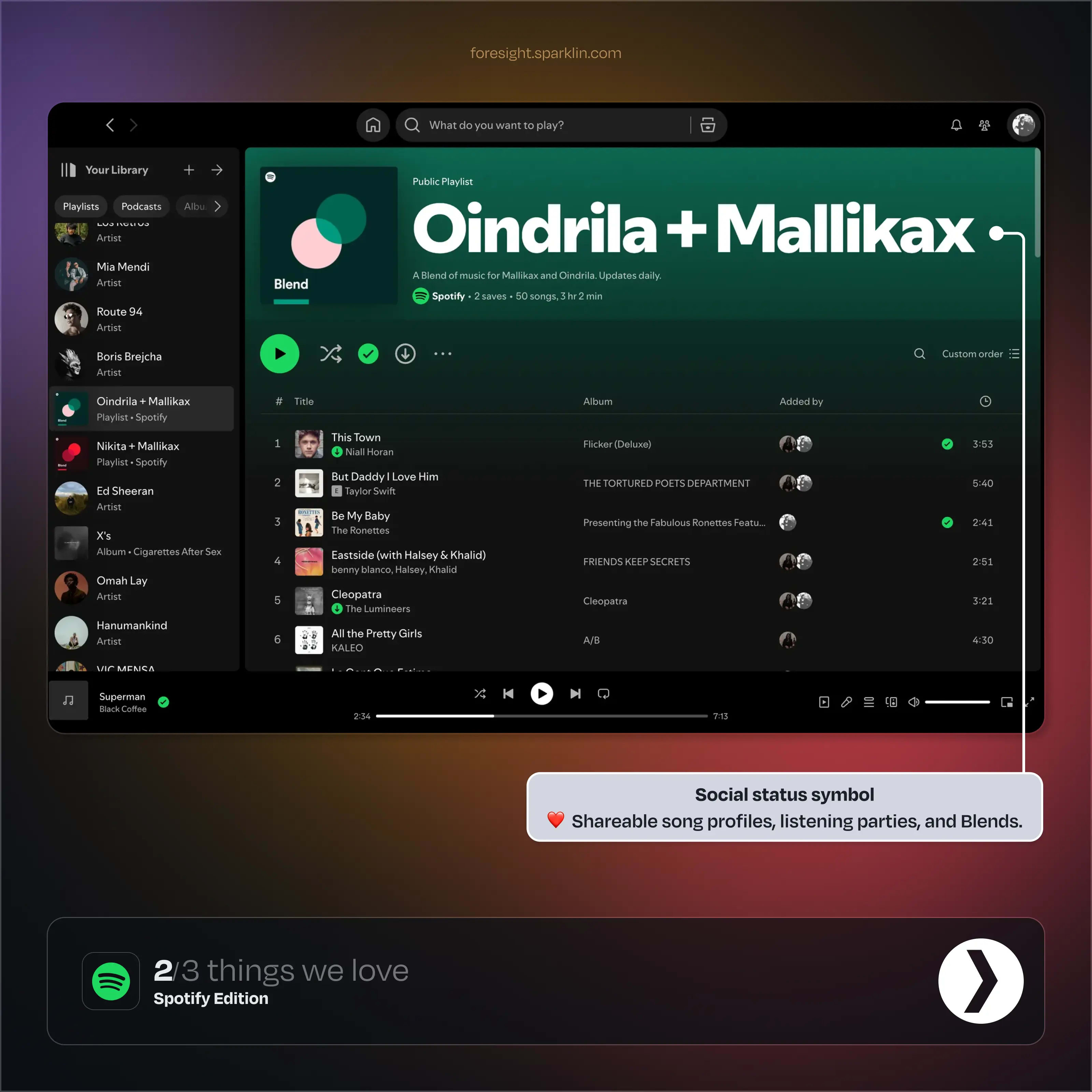
UX Psychology Laws Applied ✅
Law of Reciprocity: when users receive something of value, they feel inclined to give back—whether through engagement, sharing, or loyalty.
Law of Social Proof: People tend to follow the actions of others, especially when they are uncertain about a choice. In design, this means users are more likely to engage with something if they see others doing it too.
3. Listen anywhere, never miss a beat
I work from home so I am used to going out for a light jog whenever I need a break. One moment I’m at my desk, and the next, I’m in the great outdoors and Spotify is still with me, making sure (here it comes)...I never miss a beat.
With the ability to link multiple devices to my Spotify account, I can effortlessly shift gears between my phone, tablet, and smart speaker. Starting a spontaneous listening party, where we all jam together, and discover new favorites all in real time. All this on whichever device we have handy, with no interruptions which is fairly convenient.
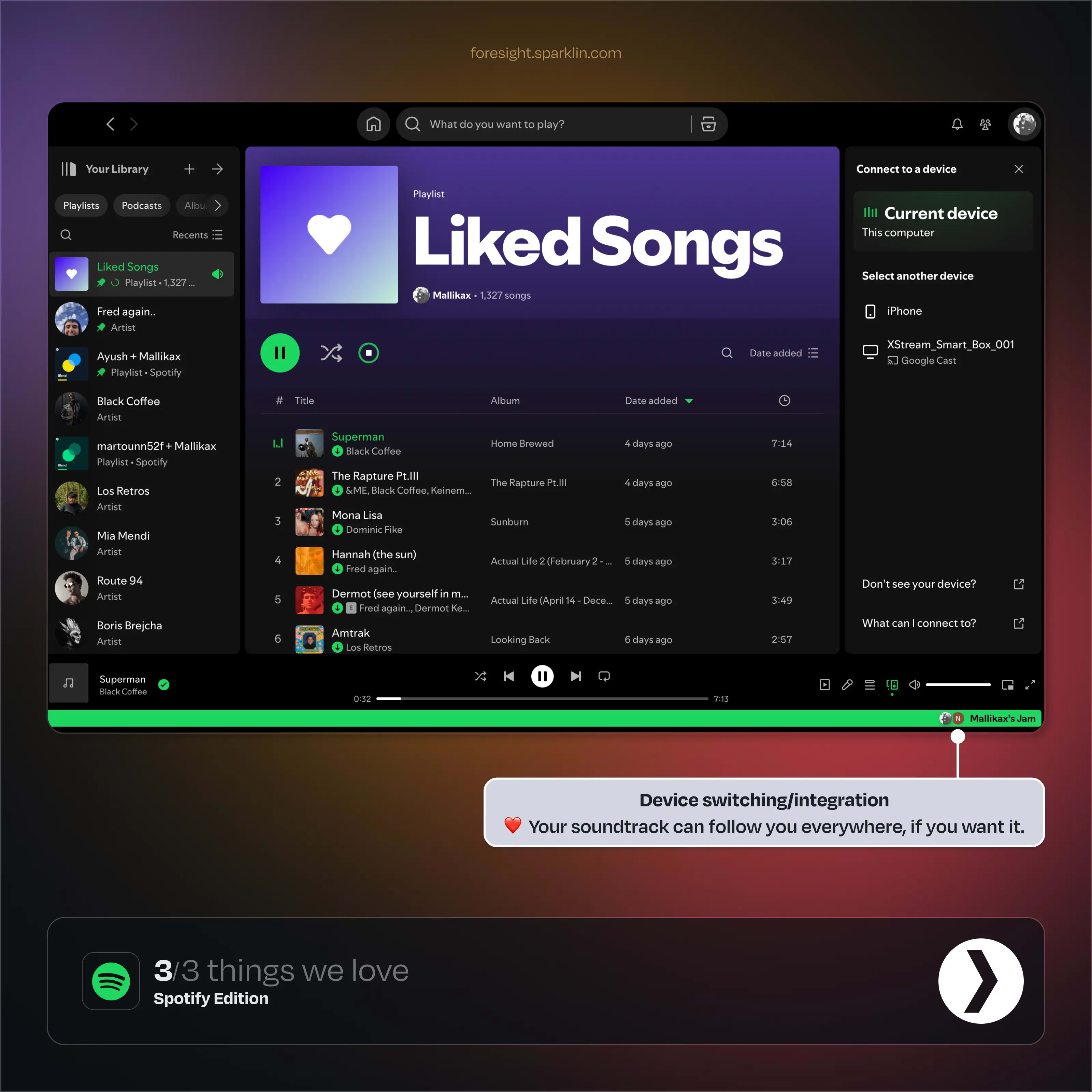
UX Psychology Laws Applied ✅
Law of Consistency: Users expect a familiar and predictable experience across different platforms, interactions, and touchpoints.
Three things we mildly hate about Spotify
1. Overcrowded home screen
The home screen is a mixed bag. While it offers a wealth of content, it can also feel overcrowded and cluttered. Users often struggle to quickly access their personal playlists amidst the barrage of readymade playlists, recommendations, and advertisements. A more streamlined interface could enhance user experience, making it easier to navigate through their feed without feeling overwhelmed.

UX Psychology Laws Denied ❌
Miller’s Law: the average person can only hold about seven (±2) items in their working memory at a time. On Spotify’s homepage, playlists, recommendations, ads, and other content all compete for attention.
2. Unpredictable playback
Despite its strengths, Spotify's shuffle feature often comes under fire. Many users report that the algorithm lacks variety, leading to repetitive songs looping in and out of playlists. Instead of a refreshing mix, you may find yourself stuck in a cycle of the same few tracks. While that is a huge plus point for nostalgia merchants, users with listening variety may have a bone to pick with the service.
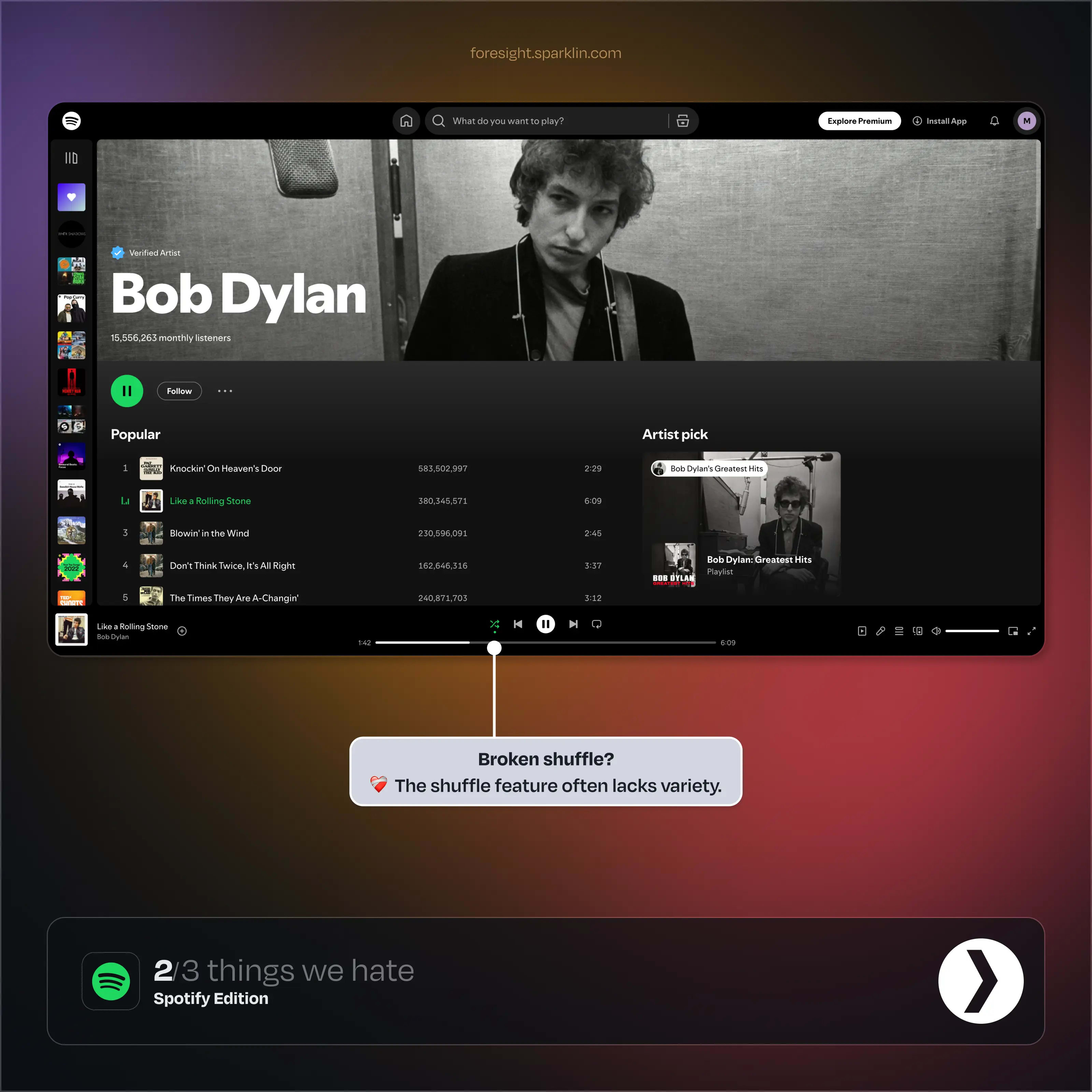
UX Psychology Laws Denied ❌
Jakob’s Law: Users are accustomed to basic features, so they prefer your site to work the same way as the ones they already know. When Spotify’s algorithm creates repetitive loops instead of true randomness, it clashes with user expectations.
3. No bulk-delete option
Spotify lets you save all the podcast episodes and songs you want, but when it’s time to clean up, there’s no way to delete multiple items at once. You’re stuck removing them one by one, turning a simple task into a tedious chore. Whether you’re clearing old episodes and songs, or just decluttering, the lack of a bulk-delete option makes it unnecessarily frustrating. A simple “Select All” would fix this, but for now, you gotta do what you gotta do.
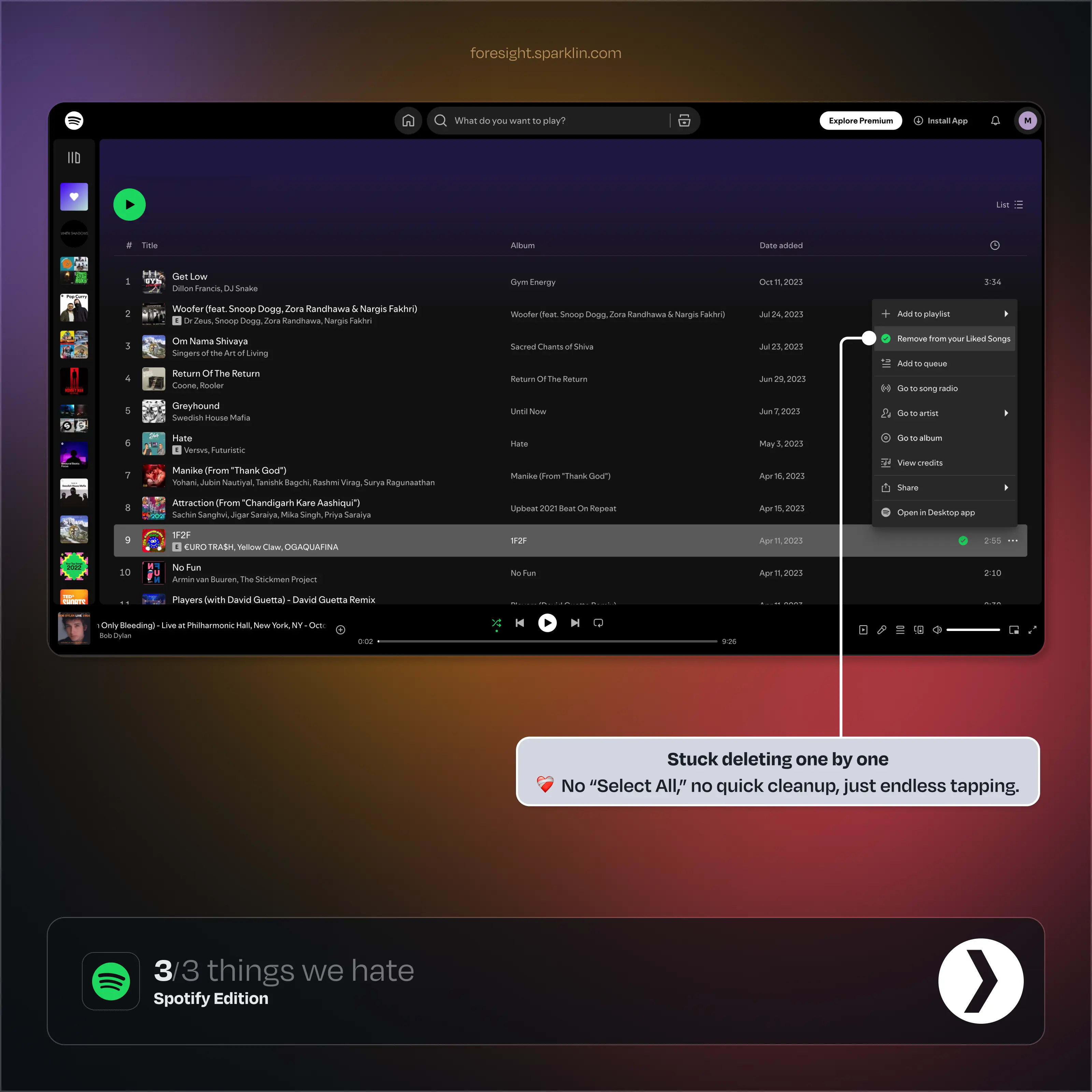
UX Psychology Laws Denied ❌
Principle of Least Effort: People naturally seek the path of least resistance when completing a task, opting for the easiest and most efficient way to achieve their goal. Users expect a simple, quick way to clean up their saved episodes like a “Select All” feature.
Ultimately, Spotify’s UX is a reminder that great design isn’t just about features. It’s about how those features work together to create an experience that feels effortless. As technology evolves, so will our expectations. And while Spotify has nailed many aspects of user engagement, the real test lies in its ability to adapt and innovate in response to changing user needs and emerging trends.

Love And Hate - A UX Design Perspective is our take on the complexities of modern systems, product objectives, and technological constraints. We believe navigating this landscape requires a deep understanding of human behavior, empathy, and a willingness to challenge unfounded assumptions. If you’ve liked what you read so far, keep your eyes peeled for more.



